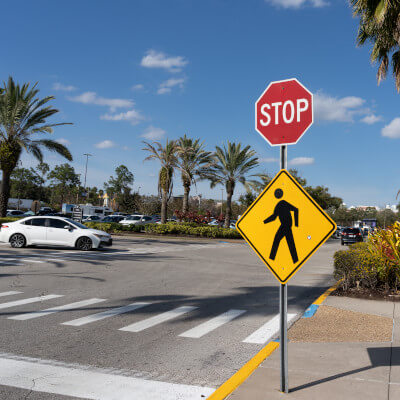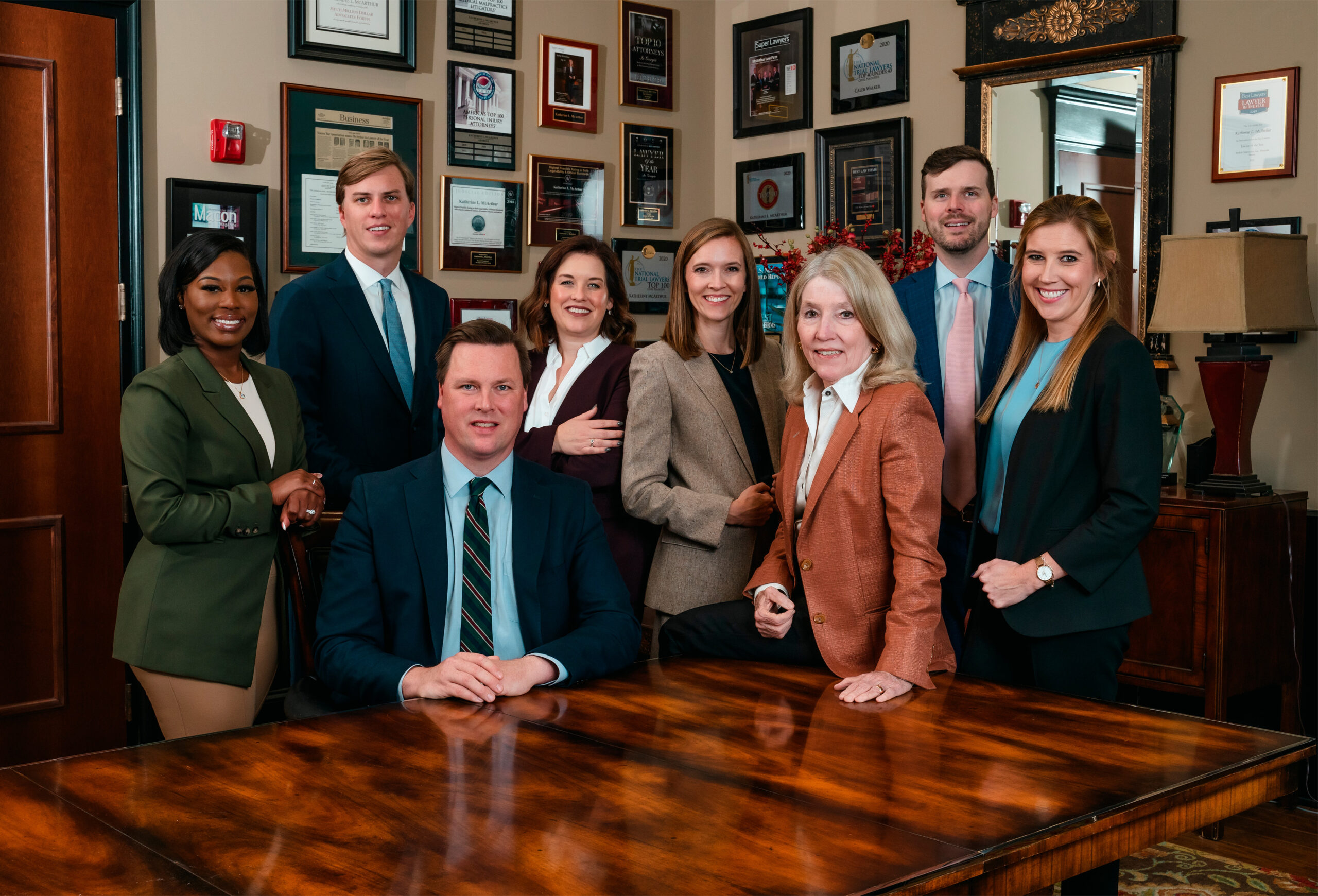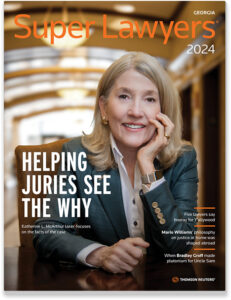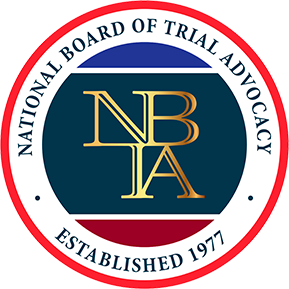Pedestrian accidents are some of the most devastating collisions on Georgia’s roads. Whether someone is crossing at a marked crosswalk, walking along a shoulder, or navigating a parking lot, the consequences of being struck by a vehicle can be catastrophic. These accidents often involve high-impact injuries such as traumatic brain injuries, spinal cord damage, broken bones, and internal trauma—many of which require long-term or even lifelong medical care. In Georgia, pedestrian fatalities have risen in recent years, with urban areas like Atlanta seeing a sharp increase due to distracted driving, speeding, failure to yield, and poor visibility at intersections.
Georgia Pedestrian Accident Lawyer
For victims, the aftermath is devastating: ambulance rides, hospital stays, surgery, physical therapy, lost income, and the emotional toll of recovery. Meanwhile, negligent drivers and their insurance companies may try to minimize payouts or shift blame. That’s why having an experienced Georgia pedestrian accident attorney is so important.
At McArthur Law Firm, we understand the unique challenges pedestrian accident victims face and are dedicated to getting you the compensation that you deserve.
McArthur Law Firm serves Fulton County, Bibb County and Fulton County, as well as Clayton County, Cherokee County, Forsyth County, and other counties in Georgia. For more information about the McArthur Law Firm or to set up a free consultation to learn what we may be able to do to help you with your personal injury case, give us a call at one of our offices in Georgia or fill out our online contact form.
- Atlanta Office: 404-565-1621
- Macon Office: 478-238-6600
- Warner Robins: (478) 551-9901
Overview of Pedestrian Accidents Cases
- Main Types of Pedestrian Accidents in Georgia
- Types of Injuries From Pedestrian Accidents
- Where Pedestrian Accidents Are Most Likely to Happen in Georgia
- Who Can Be Held Responsible After a Pedestrian Accident in Georgia
- Role of a Georgia Pedestrian Accident Lawyer
- Frequently Asked Questions
- Additional Resources
Main Types of Pedestrian Accidents in Georgia

Struck While Walking Alongside a Road – Some roads in Georgia don’t have sidewalks, especially in rural or poorly designed areas. When someone is walking along the edge of the road and gets hit, it may be because the driver drifted out of the lane or wasn’t paying attention. Even if the pedestrian wasn’t in a crosswalk, drivers are required to use due care to avoid hitting people on foot under O.C.G.A. § 40-6-93.
School Zone Pedestrian Accidents – Children walking to or from school are especially at risk. Drivers speeding through school zones or ignoring crossing guards can cause tragic crashes. Georgia law requires drivers to obey speed limits in school zones and yield to crossing guards, and violations can lead to both civil and criminal liability under O.C.G.A. § 40-6-163.
Parking Lot and Driveway Accidents – These accidents happen when drivers are backing out of parking spaces or driveways without checking for pedestrians. Since these areas are shared spaces, both parties must be careful—but drivers still have a duty to look before moving.
Left-Turn or Right-Turn Crashes at Intersections – A common cause of pedestrian injury is when drivers make turns at intersections without checking for people crossing the street. Pedestrians often assume the crosswalk is safe when they have the walk signal, but drivers sometimes rush to beat a light. These cases may involve failure to yield under O.C.G.A. § 40-6-91 or careless driving under O.C.G.A. § 40-6-241.
High-Speed Road and Highway Crashes – Some of the most deadly pedestrian accidents in Georgia happen on highways or fast-moving roads, especially when someone is walking near a disabled vehicle or trying to cross. Drivers going 55 mph or more may not see a pedestrian until it’s too late.
Backing-Up Vehicle Accidents – When drivers reverse without checking mirrors or surroundings, they may strike pedestrians—especially children or elderly individuals. These crashes often happen in residential driveways, alleys, or crowded parking lots.
Ride-Share or Bus-Related Accidents – When a pedestrian is hit by a ride-share driver or a public transportation vehicle, legal responsibility may involve the driver, their employer, or the company they work for. These cases can be more complex, especially if the vehicle was in service at the time.
Types of Injuries From Pedestrian Accidents
Traumatic Brain Injuries (TBIs) – One of the most common and serious injuries is a traumatic brain injury, often caused when the person’s head hits the vehicle or the pavement. TBIs can range from concussions to permanent brain damage. These injuries often require long-term care and can impact memory, behavior, and personality.
Spinal Cord Injuries and Paralysis – If the spinal cord is damaged in a crash, the result can be partial or total paralysis. Victims may lose movement in their legs (paraplegia) or all limbs (quadriplegia), depending on where the injury occurred. These are life-altering injuries with high medical costs and lifelong consequences.
Broken Bones and Crushed Limbs – Many pedestrians suffer broken arms, legs, or hips. In more severe cases, a limb can be crushed by the weight of a vehicle, leading to multiple surgeries or even amputation. These injuries are painful, take a long time to heal, and can affect mobility permanently.
Internal Organ Damage – Even if there are no visible injuries, the impact of a car hitting a person can cause internal bleeding, damage to organs like the liver or lungs, or other critical injuries. These may not show symptoms right away, so emergency medical care is essential.
Facial Trauma and Disfigurement – When the face strikes a hard surface or is hit directly, injuries can include broken bones, dental damage, and permanent scarring. These injuries may require reconstructive surgery and have a lasting emotional impact on the victim.
Psychological Injuries – Being hit by a vehicle can also cause serious emotional trauma. Victims may suffer from post-traumatic stress disorder (PTSD), anxiety, depression, or nightmares. In Georgia, emotional distress is a compensable injury if it results from the physical impact of the crash.
Soft Tissue Injuries and Chronic Pain – Even injuries like torn ligaments, whiplash, or nerve damage can cause long-term pain. These injuries might not show up on X-rays but still affect daily life. Chronic pain from a pedestrian accident can interfere with work, family life, and mental health.
Each injury type has its own challenges in diagnosis, treatment, and legal recovery. A skilled Georgia pedestrian accident attorney can help victims document these injuries and fight for full compensation.
Where Pedestrian Accidents Are Most Likely to Happen in Georgia
Pedestrian accidents can happen anywhere, but certain places in Georgia see more of them because of traffic patterns, poor road design, and population density. Urban areas with fast-moving traffic, limited sidewalks, or poorly marked crosswalks are especially dangerous.
In Atlanta, high-traffic streets like Buford Highway, Ponce de Leon Avenue, Peachtree Street, and Memorial Drive are known problem areas. Buford Highway in particular has a long history of pedestrian injuries and fatalities due to wide lanes, few crosswalks, and fast-moving traffic. Even when crosswalks exist, drivers often fail to stop or yield as required by law. The city’s large number of ride-share vehicles and delivery trucks also increases risk.
In Macon, pedestrian accidents frequently happen along Eisenhower Parkway, Mercer University Drive, and near the downtown area. These roads combine high traffic volumes with frequent pedestrian activity and often have outdated infrastructure. In some cases, the absence of sidewalks or marked crosswalks forces pedestrians to take dangerous routes, increasing the chances of a collision.
In Warner Robins, roads like Watson Boulevard and Russell Parkway have seen growing numbers of pedestrian incidents, especially near shopping centers, schools, and public transportation stops. These areas often lack clear signals or proper signage, which creates confusion and increases the chance of a pedestrian being hit. School zones and apartment complexes along these roads also add to the foot traffic, and drivers often fail to slow down as required.
Who Can Be Held Responsible After a Pedestrian Accident in Georgia
Negligent Drivers
The most common at-fault party is the driver of the vehicle that hit the pedestrian. If the driver was speeding, distracted, drunk, or failed to yield at a crosswalk, they can be held liable under O.C.G.A. § 51-1-6. Georgia law, including O.C.G.A. § 40-6-91, requires drivers to stop for pedestrians in crosswalks. If a driver violates this law and causes a crash, they may be held responsible for all resulting damages. Additional violations such as reckless driving or texting while driving can also be evidence of fault.
Employers of Commercial Drivers
When a pedestrian is hit by a company vehicle, such as a delivery van or ride-share car, the employer might also be held responsible under a legal principle called vicarious liability (O.C.G.A. § 51-2-2). This applies when the driver was acting within the scope of their job at the time of the crash. For example, if a delivery driver hits someone while making a scheduled drop-off, the employer may be liable. This is based on Georgia case law and general tort principles, not a specific statute.
Government Entities
Sometimes the road itself plays a role in the accident. If poor lighting, a missing crosswalk, or a dangerous sidewalk design contributed to the crash, the city or county might be partly to blame. However, suing a government agency in Georgia involves specific legal rules. The Georgia Tort Claims Act outlines how and when a person can bring a claim against the state or a local agency. These cases often have shorter deadlines and special notice requirements. The exact process depends on whether the responsible party is a city, county, or state agency, and further legal analysis is needed to determine eligibility.
Property Owners and Businesses
If a pedestrian is injured on private property—like a parking lot, shopping center, or apartment complex—the property owner could be liable if the layout of the property created a dangerous condition. Under O.C.G.A. § 51-3-1, property owners must keep their premises reasonably safe for invitees, including shoppers and visitors. If poor lighting, unclear signage, or unsafe walkways contributed to the accident, the owner may be legally responsible.
Shared Fault Under Georgia Law
Georgia uses a modified comparative negligence system under O.C.G.A. § 51-12-33. This means that even if the pedestrian was partly at fault—for example, if they crossed outside a crosswalk—they may still recover damages, as long as they were less than 50% responsible. However, their total recovery will be reduced by the percentage of fault assigned to them.
Role of a Georgia Pedestrian Accident Lawyer
A Georgia pedestrian accident lawyer helps victims manage legal claims resulting from being struck by a vehicle. These attorneys understand the unique legal protections pedestrians have under Georgia law, such as those outlined in O.C.G.A. § 40-6-91 and O.C.G.A. § 40-6-93. They investigate the scene, collect evidence like traffic camera footage or witness accounts, and counter efforts by insurance companies to shift blame or undervalue claims. Whether the injury occurred in a crosswalk, along a rural shoulder, in a parking lot, or near a school zone, a skilled lawyer ensures the driver’s negligence is clearly documented and liability is properly established.
In terms of compensation, a pedestrian accident lawyer will aggressively pursue damages that reflect the full scope of the victim’s suffering. This includes medical expenses, lost wages, future rehabilitation costs, and compensation for pain and emotional trauma such as PTSD. In severe cases involving paralysis, disfigurement, or long-term disability, they may also seek damages for diminished quality of life and future loss of earning potential.
Frequently Asked Questions
Can someone sue if they weren’t in a crosswalk at the time of the accident?
Yes. Under Georgia law (O.C.G.A. § 51-12-33), a pedestrian may still recover damages if found to be less than 50% at fault.
What happens if the driver fled the scene of the accident?
In such cases, the injured party may be able to file a claim under their own uninsured motorist coverage or explore other legal avenues depending on the specific facts.
How long does someone have to file a claim after a pedestrian accident?
Typically, a personal injury claim must be filed within two years from the date of the accident, as set forth in O.C.G.A. § 9-3-33, unless exceptions apply.
Is compensation available for pain and suffering?
Yes. Georgia law permits financial recovery for physical pain, emotional distress, and diminished quality of life.
Can the city be held responsible for dangerous sidewalks or crosswalks?
Potentially. Claims against a city must meet strict notice and procedural requirements under the Georgia Tort Claims Act, and a legal review is essential.
Can a claim be filed if a child is hit by a vehicle?
Yes. A parent or guardian may file a claim on behalf of a minor. Additionally, children often benefit from extended filing deadlines under Georgia law.
Does someone have legal rights if hit in a parking lot or driveway?
Yes. Drivers are obligated to exercise reasonable care in these areas and can be held liable under O.C.G.A. § 51-1-2.
Will every pedestrian accident case go to court?
Not necessarily. Many claims are resolved through settlement, but a lawyer can prepare the case for trial to pursue full compensation if necessary.
Additional Resources
Georgia Department of Transportation – See & Be Seen – This source is the Georgia DOT’s pedestrian safety campaign. It shares statistics about pedestrian fatalities, times and locations of incidents, and tips for both drivers and pedestrians. It also outlines infrastructure improvements like lighting and crosswalks and stresses shared responsibility in road safety.
Governor’s Office of Highway Safety in Georgia – Georgia Traffic Safety Facts: 2022 Data – This fact sheet provides detailed data on pedestrian and bicyclist fatalities, injuries, and crash characteristics across Georgia. It covers demographics, injury surveillance, crash environments, and contributing factors, offering a broad overview of traffic safety outcomes involving non-motorists in 2022.
Governor’s Office of Highway Safety in Georgia – Georgia Law on Pedestrian Safety – This source explains Georgia’s legal codes about pedestrian behavior and safety. It includes laws on crossing roads, using sidewalks and crosswalks, and walking under the influence. It also provides links to safety programs like Safe Routes to School and contact information for further support.
Fox 5 Atlanta – Georgia Has One of the Highest Pedestrian Fatality Rates in the Country, Data Shows – This news article reports on the rise in fatal pedestrian crashes in Georgia. It highlights data from state agencies showing the increase in fatalities, especially at night and outside of crosswalks. The article includes safety tips for both drivers and pedestrians and links the rise in accidents to increased travel post-pandemic.
Hire a Lawyer for Pedestrian Accident Injuries in Cobb County, Georgia
McArthur Law Firm serves the cities of Atlanta in Fulton County, Macon in Bibb County, Kathleen in Houston County, Peachtree Corners and Lawrenceville in Gwinnett County, Marietta and Smyrna in Cobb County, Stonecrest, Brookhaven and Dunwoody in Dekalb County, Albany in Dougherty County, Columbus in Muscogee County and throughout surrounding areas of the state of Georgia.
Contact one of our offices at the following numbers or fill out an online contact form to start building your case.
- Atlanta Office: 404-565-1621
- Macon Office: 478-238-6600
- Warner Robins: (478) 551-9901







